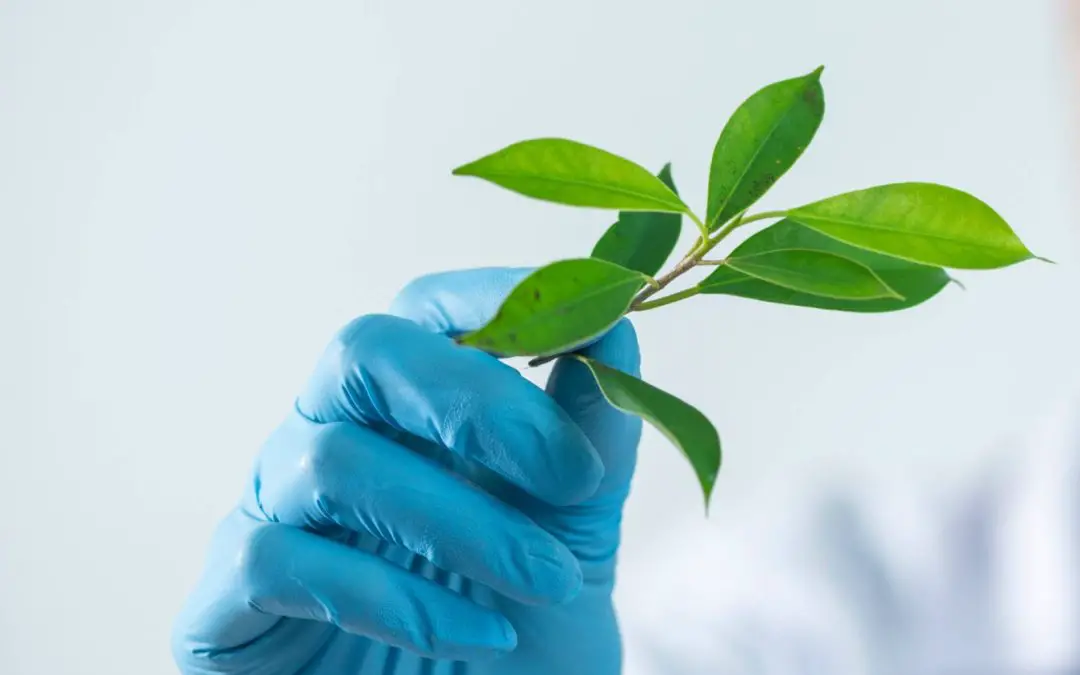Experiments are the heart of science. They’re the tiny little incremental improvements that drive the incredible human progress we’ve been seeing. Every enormous leap forward is propelled by thousands of little experiments.
Hey you! I’m actively looking for botanists/plant biologists/scientists of all walks to help me design better experiments. Get in touch if you want to collaborate!
Key steps
- How have others tested your problem? How can you improve?
- Define a testable, repeatable hypothesis
- Set a null hypothesis
- Choose a significance level
- Take a sample (sufficient to support your significance level)
- Calculate a P-value
- If the P-value is less than the significance level, we can reject the null hypothesis!
What makes a good hypothesis?
A hypothesis is the core of a well designed experiments. It’s really a dressed up question. What are you trying to figure out? What variables are you trying to link?
A good hypothesis has a few key characteristics:
- It needs to be testable
- It establishes a link between the explanatory variable and the response variable
- An experiment can test it with available methods, equipment, and budget
- It’s safe and ethical
- It’s specific enough to be useful and unambiguous
Some example hypotheses are:
- Microgreens grow better under natural light.
- Fertilizer makes microgreens healthier.
- Healthy seeds grow better than damaged seeds.
But if we wanted to take the above 3 hypotheses to the next level, we could get more specific (and in doing so create research that’s more useful):
- Sunflower microgreens have higher dry yield under high color rendering index 6500 K LED’s than medium color rendering index 5000 K LED’s.
- Essential vitamins (provitamins A, C, E, and K1) occur in higher concentrations when microgreens are grown with dilute 10-10-10 fertilizer with micronutrients than with distilled water.
- Seeds exposed to mechanical crushing pressure of 100 psi germinate at lower rates than control seeds.
An example:
Let’s look at a simple example: fertilizing pea microgreens.
The hypothesis could be: giving fertilizer to peas will increase the microgreen yield.
Sounds reasonable enough right?
But actually there are a few problems with this. How are you measuring yield? And if yield did improve, was the improvement due to the fertilizer? Or did they improve because they were watered differently? Or the quality of the seeds is really variable and they just happened to be fresher? Or were they planted in better soil?
How can you really say that the fertilizer improved the yield?
Or if you were measuring taste, maybe it was just the placebo effect. Maybe you just expected a microgreen with more nutrients available to develop more complexity and taste better. So how can we control for this? And how can we create results that are defendable, trustworthy, and repeatable?
Explanatory variable
The explanatory variable is what you’re varying.
It’s the If in the If…then.
If fertilizer and nutrients in the soil are higher, then dry yields will be higher.
The explanatory variable is the focus of your investigations. What are you going to vary in your experiment?
Seeding density? Watering? Soil type?
These could all make great explanatory variables.
Response variable
The response variable is where we measure the impact of the experiment. We make a change, then we measure something to figure out what happened. The key result or key insights often come from understanding the relationship between the explanatory and response variables.
In our example the response variable is yield (the fresh or dry weight of the microgreens we get).
Control group
A control group receives a standard treatment, or no treatment at all. The standard treatment for our purposes is soil with no fertilizer (just water).
In our example, a control group wouldn’t involve fertilizer. A control group is designed so your explanatory or independent variable is controlled. The control group should be designed to be under conditions as similar to the treatment group as possible, except for the independent variable.
If the control group is under similar conditions for all other variables, then it’s easier to be confident that the treatment group’s results are due to the explanatory variable (fertilizer here).
The control group should be sampled from the same population. For us, that means we want the control group to use the same seeds, and be in the same environment (lighting, soil, temperature, etc.).
Treatment or Test group:
In this case, we have two groups, one that gets treated normally (the control group) and then the group that gets fertilizer (the treatment group).
In our case, we’re measuring yield, which is easy to measure objectively, but in some experiments there is human judgement that can creep into the results if you’re not careful. Could we be subconsciously influencing the results and picking up an increase by accident? So ideally you would have some system of preventing the experimenters from knowing which group they’re looking at, a way of anonymizing (or blinding) the groups from the researchers.
Double blind experiment
The first blind
You want the subjects (in this case pea seeds) to not know which group they’re being put into. I don’t think we need to worry about the thoughts of peas influencing our experiment.
We can safely assume the peas don’t know which group they’re in.
The second blind
And the other blind is the resaearchers. The researchers should also not know which group they’re experimenting on because they may unconsciously impact the results.
Depending on the design of the experiment, blinding of the researchers may be a nice to have, or absolutely essential (like in the case of many medical trials).
Even when measuring something objective, it can be surprising, but bias can play into measurements and analysis.
Results
So suppose there’re a 5% increase in yields on the control group (vs typical results), and a 20% increase in yields on the fertilized group.
It would be tempting to say that in this case the fertilized microgreens are 15-20% better than unfertilized. But what is the probability that this increase is due to fertilizer, and not just random variation.
If you grow peas, some will naturally germinate easier and quicker, and grow larger plants than others.
Inferential statistics goes into this much deeper.
Statistical validity
P-values and significance tests
Significance tests tell us whether we should be attributing a difference in the responding variable to the explanatory variable.
For our example above, significance will give us some sense of whether the increase in yield is due to fertilizer, or if it’s just random variation, and our average yield is the same as before.
Null hypothesis is the idea that there’s no change.
We need to set a threshold, which is known as the significance level. Typically 5% or lower. We can’t measure every pea microgreen ever grown under specific conditions. But we can measure a certain sampling, a certain subset that we’re growing.
Null hypothesis
So we have something called the null hypothesis. Assuming that fertilizer does nothing, what is the probability that the peas grow 20% more yield. Or phrased differently, what is the probability that an unfertilized flat of pea microgreens will grow 20% more than average?
If the probability is very low, we can say that the fertilizer has a high chance of increasing the yields.
Another way of stating the null hypothesis is this:
If we’re seeing a yield difference between fertilized pea microgreens and unfertilized pea microgreens it’s because:
- We’re making some error in our experiment on how we’re measuring the yield. If we’re measuring the fresh (wet) yield, it could just be showing us which microgreens had more access to water (the shelf where the microgreens were sitting wasn’t level), or the soil wasn’t evenly mixed, so half the tray wicked up more water through capillary forces. So we should measure dry yield next time.
- Or the measured difference is because the peas weren’t randomly selected properly. The unfertilized peas happened to be from the top of the bag, and the bag was baking in the hot sun.
Make your experiment replicable
Your experiment needs to have enough detail and controls that someone else can replicate it. It’s natural to expect some bias to creep into experiments (especially when OTHER people are doing them), so how can an experiment be replicated?
Will other people get the same results? Even though you think you randomly selected the two groups, maybe you had certain biases that you were blind to. Maybe you used a specific cultivar of seed that responds well to fertilizer. Maybe your lighting was limiting, and so your seeds weren’t able to use all the nutrients at their disposal. Or maybe your batch of seeds was actually a mixture of two batches, and the seed supplier never mentioned it.
If someone replicates your experiment (according to your specifications) but under slightly different constraints. Perhaps using a different seeds supplier. Or a different brand of the same N-P-K fertilizer, or different lighting. And they get a different result. Maybe the difference is larger or smaller, or due to a different variable than you initially thought.
Sample size and variability
The larger the sample size you’re able to do this with, the more robust the results are.
And also, the larger you’re able to make the variability in other variables, the more robust your results are. So if you can show that fertilizer increases yields whether the peas are under 5000k or 6500 K lighting. And whether or not the peas are soaked first or not. And whether or not the peas are grown in soil or on a hemp mat. Then you can be very confident in your results.
The progress of science is at stake!
Being rigorous in this process is worth the extra effort.
Look around at other experiments. And look at data that’s reported in the news, or in courses you’re taking. You might be surprised to find that a lot of information out there is only loosely supported by the data.
So clearly, there’s a lot of work to do (and ideally re-do!).
P-value is a conditional probability. The probability that the sample mean is greater than or equal to our results, given that our null hypothesis is true. So for our example: If we assume that fertilizer does nothing (or that an unfertilized tray yields the same as a fertilized tray) what’s the probability that an unfertilized tray of microgreens would result in 20% increased yields?
Based on the above, can we reject the null hypothesis?
Assumptions
People build on previous experiments. If you can do research in a way that people trust your results, they can build on your work, and improve it. You’re always relying on assumptions, and they key thing is to track them as well as you can. Then people can examine your conclusions, and if they’re able to show an assumption is wrong in the future, they can re-do the experiment and account for that and push knowledge even further.

I’m Alex Lafreniere. I learned a lot about plants when I built and operated a landscaping company. But, there’s always more to learn. Ever since travelling across the world, I’ve wanted to find ways to bring more tropical and exotic plants into my life. This is the site where I share everything I’ve learned with you.
This site is owned and operated by Plant Hardware, a sole proprietor headquartered in Calgary, Canada. Plant Hardware is a participant in the Amazon Services LLC Associates Program, an affiliate advertising program designed to provide a means for sites to earn advertising fees by advertising and linking to Amazon.com.Plant Hardware may also participate in affiliate programs with Bluehost, Clickbank, CJ, ShareASale, and other sites. Plant Hardware is compensated for referring traffic and business to these companies.

